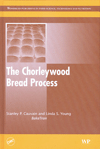Bringing Home the Bread
It’s said that man cannot live on bread alone, but my older brother, Michael, would beg to differ. Few people love the staff of life as much as he does.
When we were kids growing up in Muscatine, Iowa, Michael would come home from high school and take an entire loaf of bread (the good ol’ white sandwich variety) up to his room with him. No butter. No jelly. Just the bread. (He sometimes did the same with a jar of marshmallow whip, but that’s a whole other column.) My parents used to say you could always tell where their son sat at the dinner table by the ring of breadcrumbs he left around his plate.
When they were first married, my brother and his wife, Stacy, lived above a Bruegger’s Bagel Bakery in Coralville, Iowa, where the scents of cinnamon raisin, blueberry and onion would waft upstairs each morning, tempting residents of the apartment complex. As if that weren’t enough, just down the hall on the other side of the building was a small, organic, artisan bakery. I’m certain Michael fell pray to both neighbors on many an occasion.
Today, my brother is as devoted to bread as ever. And he’s passed that love on to his son Christian, who at age 5 will sooner eat the exterior of the corndog than the core, the bread on the sandwich than the filling, the bun on the hamburger than the beef, etc.
Of course, Michael’s choices no longer are limited to white sandwich bread. Today, a trip to his house reveals loaves of whole grain, 7-grain, whole wheat, you name it. (But he’s still been known to eat said bread sans toppings.)
My parents’ cupboard in Newark, Ohio, is similarly stocked, but with premium, round, Old World-style loaves in profiles such as Parmesan, sourdough, and olive oil and rosemary. Like many Americans, they’ve become bread snobs, overlooking static supermarket shelves for the likes of par-baked Orlando and La Brea brand selections. (My dad enjoys a crusty slice of Italian dipped in extra virgin olive oil. But one of his favorite treats still is pedestrian peanut butter and banana on toast.)
Over Christmas, when I asked my mother to make French toast, she wanted to know what kind of bread I would like. “The usual,” I said, meaning Texas Toast, the thick-cut, pre-sliced, packaged white bread on which I was raised (ideal for coating in egg batter, frying up in an iron skillet and smothering in powder sugar and strawberry preserves). So Mom headed off to the store, only to call home when she couldn’t find the object of my desire. I carefully guided her through the bread aisle, a destination foreign to my mother, who for years has only bought rustic loaves from local bakeries and mom-and-pop grocery stores (and Panera), until she located a bag of the potato persuasion.
At Thanksgiving, my aunt and uncle usually arrive at my parents’ house with Italian pepperoni rolls (my fave) from their local bakery, but on their last visit, they brought with them a hearty loaf from the new Italian place that had just opened down the street from their house in Morgantown, W.V., proving that bread follows my family everywhere, from the Midwest to the mountains of Appalachia.
I, too, have caught the bread bug. Since joining the staff of Snack Food & Wholesale Bakery magazine a little over a year ago, I’ve sampled quite an array, from Wonder Made With Whole Grain White (surprisingly good) to Schwebel’s Cinnabon breakfast bread (superb!) to Rudi’s Organic Bakery loaves (both healthful AND tasty). At present, I am intrigued by Baker’s Inn’s short loaves, ideal for a single person such as myself. From Sara Lee’s Soft & Smooth to Pepperidge Farm’s Simply Delicious, there is no end to the varieties available in this now Atkins-free age, where carbs are celebrated rather than eschewed.
That said, man cannot live on bread alone. But like my brother, he sure can try.





